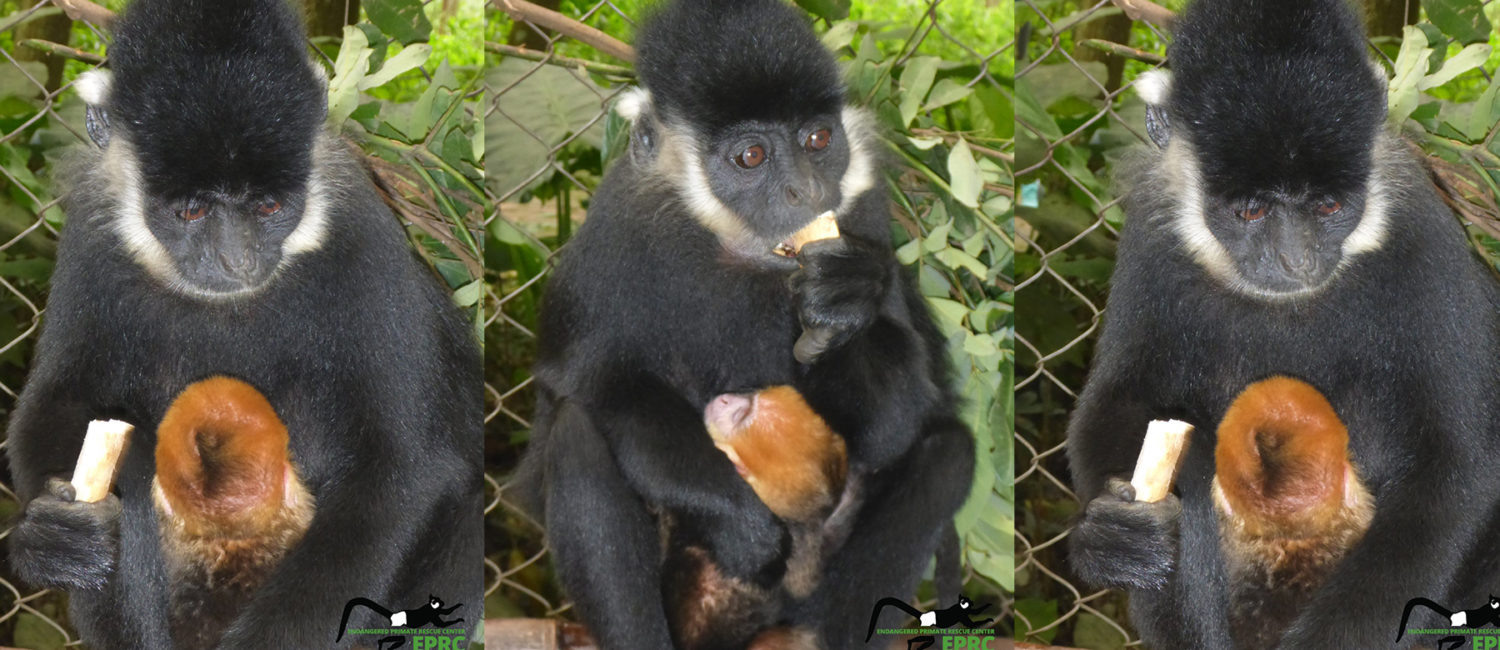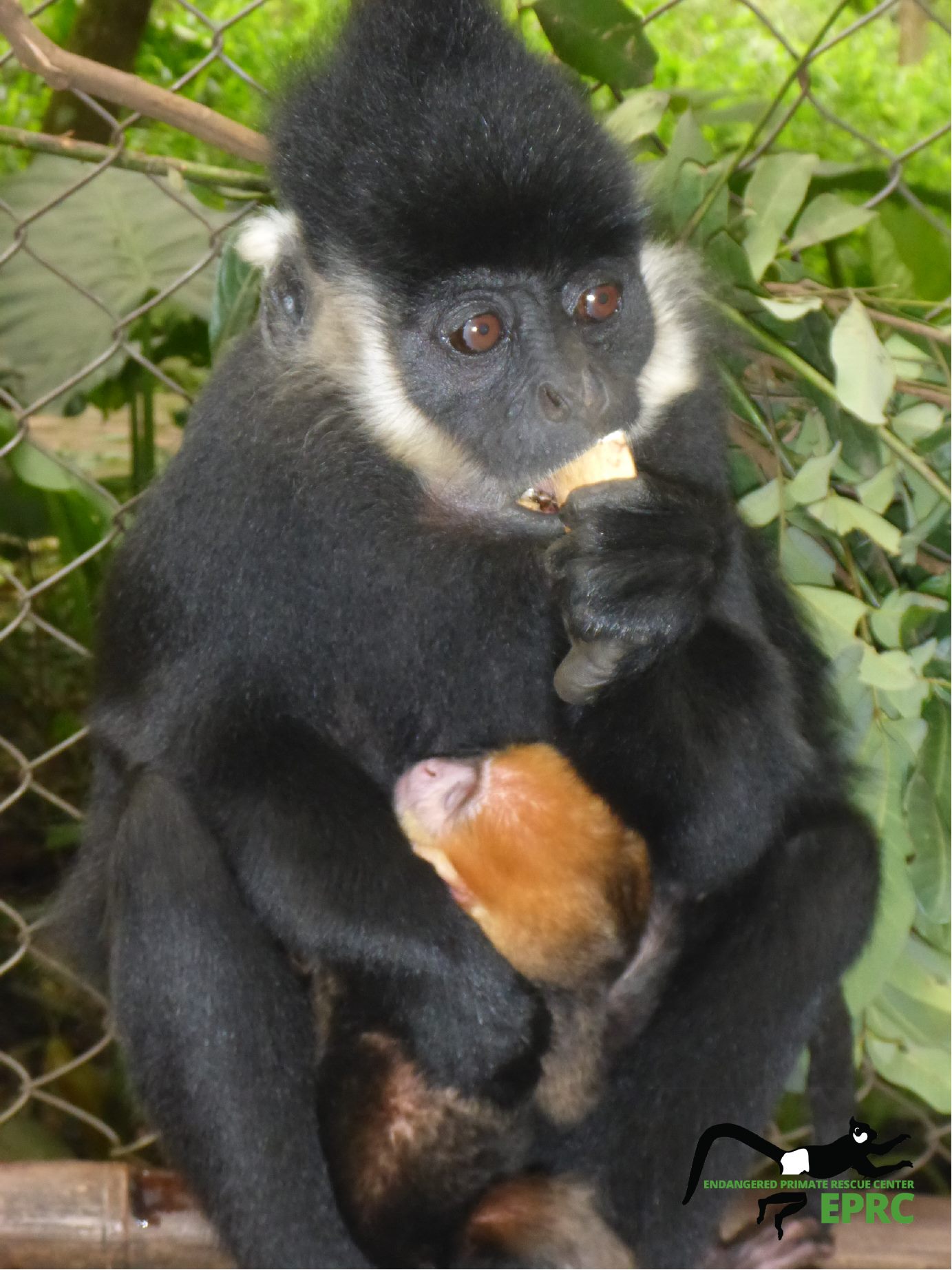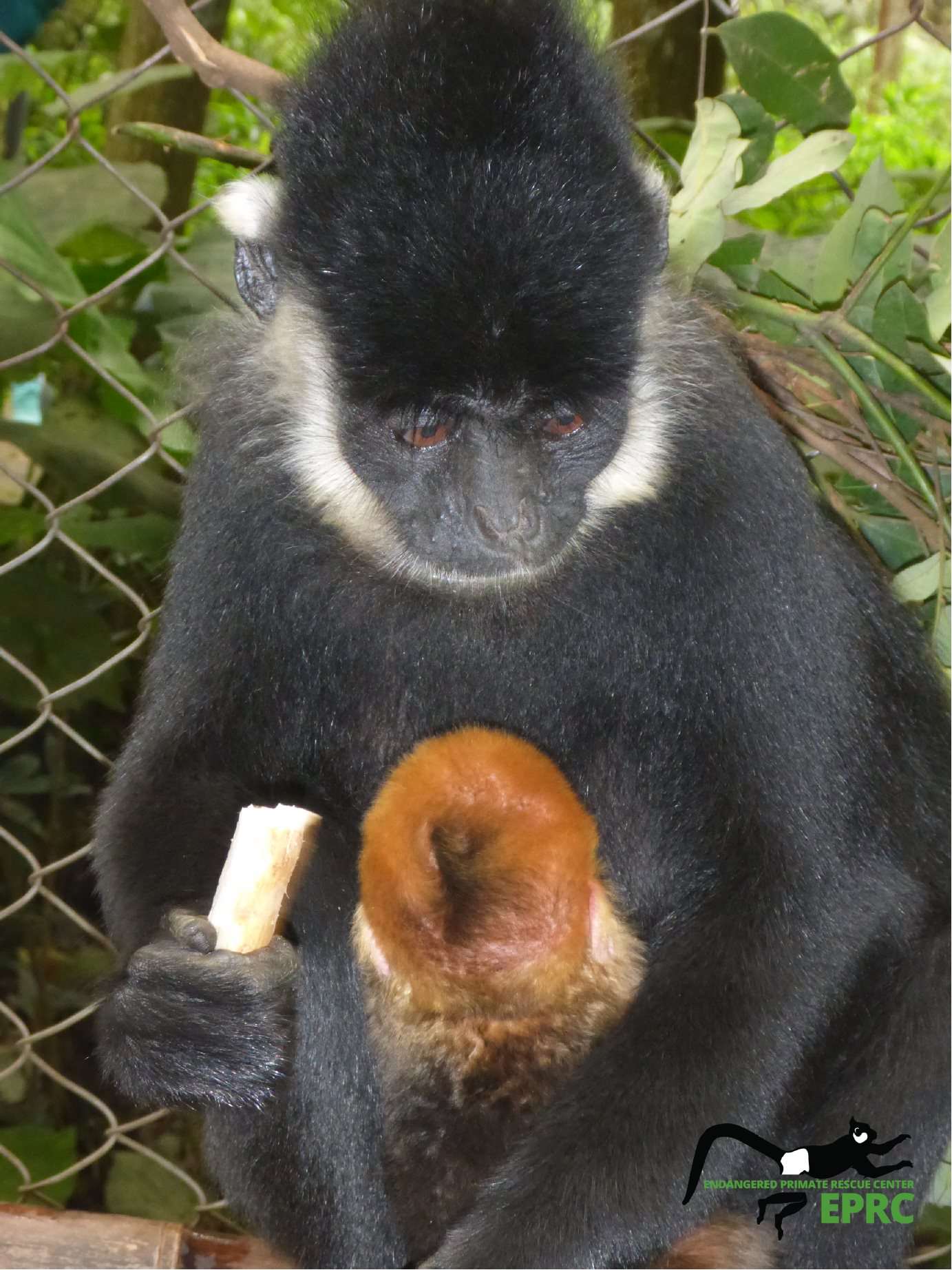(Visited 918 times, 1 visits today)

The Hatinh langur is well-known around the center for their reproductivity rate. And they once again just proved their fame by giving birth to an orange female baby this morning, making it the 7th baby Hatinh langur out of the total 13 baby primates born in EPRC since 2015.
No one would forget the newborn female Hatinh langur’s birthday as she was born on Easter Day, 27th of March. Hatinh langur offspring, just like any other Trachypithecus (Cat Ba langur, Delacour’s langur…), are coated with an orange fur at birth and will gradually transform into their adult fur in the first one year and 3 month of their life. The only difference in coloration between male and female Hatinh langur at birth is the white patch on the rump of the female offspring, while the male wears a orange fur all over their body. Hence, this newborn is a female.
However, a newborn could also have different color variations as some would not be completely orange. This is also the case for the newborn as she’s already possessed a color mixture of black and orange.

» Delegates from Hatinh province and rangers from Ke Go Nature Reserve attended the official ceremony of the release program.

» Delegates from Hatinh province and rangers from Ke Go Nature Reserve attended the official ceremony of the release program.
It is also a common behaviour for female individuals in a group of langurs to take turn and take care of the infant. This “aunting behaviour” can range from merely approaching the infant to active carrying and protection of the baby. In cage 6A in the EPRC, visitors can observe this behaviour of Hatinh langurs as in addition to the mother, the other females in the cage would occasionally take turn and carry the newborn.
To read follow-up stories about the new Hatinh langur baby, check out our Facebook page for the quickest and latest update. Or, check out other inside stories that happen here in EPRC by clicking here.

Established in 1993, EPRC is a not for profit project dedicated to the rescue, rehabilitation, breeding, research and conservation of Vietnam’s endangered and critically endangered primate species.
© Endangered Primate Rescue Center 2020
Website by MINIMUMMEANS